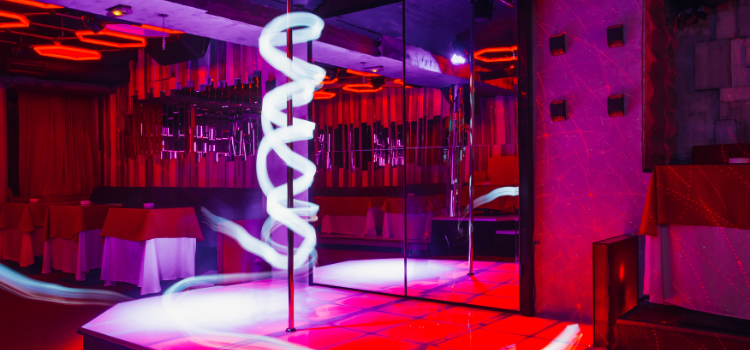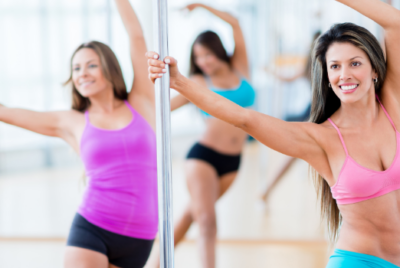Why is Pole Dancing Sexualized: Debunking Myths and Embracing Empowerment
Introduction
As a pole dancing enthusiast I often encounter questions and misconceptions about the art form. One common question that arises is, “Why is pole dancing sexualized?” It’s important to address this topic and shed light on the broader perspective surrounding pole dancing. In this article, we will explore the reasons behind the sexualization of pole dancing and the impact it has on the community. In addition to that, we will delve into the empowering nature of pole dancing. Furthermore, we will offer suggestions on how to promote a positive perception and effectively combat body shaming.
Understanding Pole Dancing
To understand why society sexualizes pole dancing, we need to explore its origins and evolution. Pole dancing first emerged as a source of entertainment in circuses and vaudeville shows, where it primarily featured acrobatics and performances showcasing strength. However, over time, it has evolved into an art form that combines dance, athleticism, and self-expression.
Historical Perspective
If we look back in history, we can trace the roots of pole dancing to traditional Indian sports like “Mallakhamb,” where performers demonstrated their strength and agility on wooden poles. Subsequently, the Chinese adopted it as “Pole-Acrobat,” showcasing acrobatic skills on bamboo poles. These practices were not inherently sexual; rather, they emphasised the physical prowess and artistry of the performers.
Misconceptions and Stereotypes
Unfortunately, the sexualization of pole dancing is largely due to misconceptions and stereotypes perpetuated by popular culture. Media portrayals often focus on pole dancing in the context of strip clubs and adult entertainment, contributing to the prevalent notion that it is solely an erotic activity. This narrow portrayal has overshadowed the artistry, athleticism, and self-expression inherent in pole dancing.
The Empowering Nature of Pole Dancing
Pole dancing can be an empowering activity for individuals of all genders and body types. It promotes self-confidence, body positivity, and a sense of liberation. Through pole dancing, individuals can build strength, flexibility, and grace, enhancing both their physical and mental well-being. It allows for artistic expression, allowing individuals to tell stories, explore emotions, and challenge societal norms.
Challenges Faced by the Pole Dancing Community
Despite the positive aspects of pole dancing, the community faces various challenges. The sexualized perception of pole dancing can lead to judgement, discrimination, and stigmatisation. Prejudice against pole dancers is a common occurrence, as they are unfairly associated with negative stereotypes. This can hinder their progress, limit opportunities, and create barriers within the industry.
Breaking the Stigma
To combat the sexualization and stigma surrounding pole dancing, it is essential to promote a more holistic understanding of the art form. Education plays a vital role in breaking down stereotypes and highlighting the diversity within the community. By sharing stories of individuals who have found empowerment through pole dancing, we can challenge the prevailing misconceptions and inspire others to appreciate the artistry and athleticism involved.
Promoting Positive Perception
Promoting a positive perception of pole dancing requires a collective effort from the community and society at large. Emphasising the artistic and athletic elements rather than solely focusing on sensuality can help shift the narrative. Encouraging more diverse representations, showcasing the versatility of pole dancing, and highlighting the achievements of pole dancers in various competitions and performances can contribute to a broader understanding of the art form.
Overcoming Body Shaming
Pole dancers frequently encounter the pervasive issue of body shaming. It is essential to celebrate and respect the diverse range of body types within the community. Emphasising the importance of body positivity and inclusivity can create a more supportive environment for all pole dancers. By challenging beauty standards and promoting self-acceptance, pole dancing can become a platform for celebrating individuality and fostering a sense of belonging.
Conclusion
In conclusion, the sexualization of pole dancing is a result of misconceptions, stereotypes, and media portrayals that overshadow the true essence of the art form. By promoting a more inclusive and positive perception of pole dancing, we can overcome the stigma and celebrate its empowering nature. Embracing diversity, challenging stereotypes, and fostering body positivity will contribute to a more accepting and supportive environment for the pole dancing community.
FAQs
Q1: Is pole dancing only for women?
A1: No, pole dancing is not limited to any specific gender. People of all genders can participate in and enjoy pole dancing.
Q2: Is pole dancing considered as a sport?
A2: Yes, pole dancing is recognized as a sport by various international organisations. It requires strength, flexibility, and skill, making it a physically demanding activity.
Q3: Are there any age restrictions for pole dancing?
A3: Pole dancing can be enjoyed by individuals of various ages. However, specific studios and classes may have age restrictions or offer age-appropriate sessions for children and teenagers.
Q4: Is pole dancing suitable for beginners?
A4: Yes, pole dancing classes cater to individuals of all skill levels, including beginners. There are classes specifically designed to introduce newcomers to the fundamentals of pole dancing.
Q5: How can I find a reputable pole dancing studio?
A5: Researching local studios, reading reviews, and considering recommendations from other pole dancers can help you find a reputable and supportive pole dancing studio in your area.




